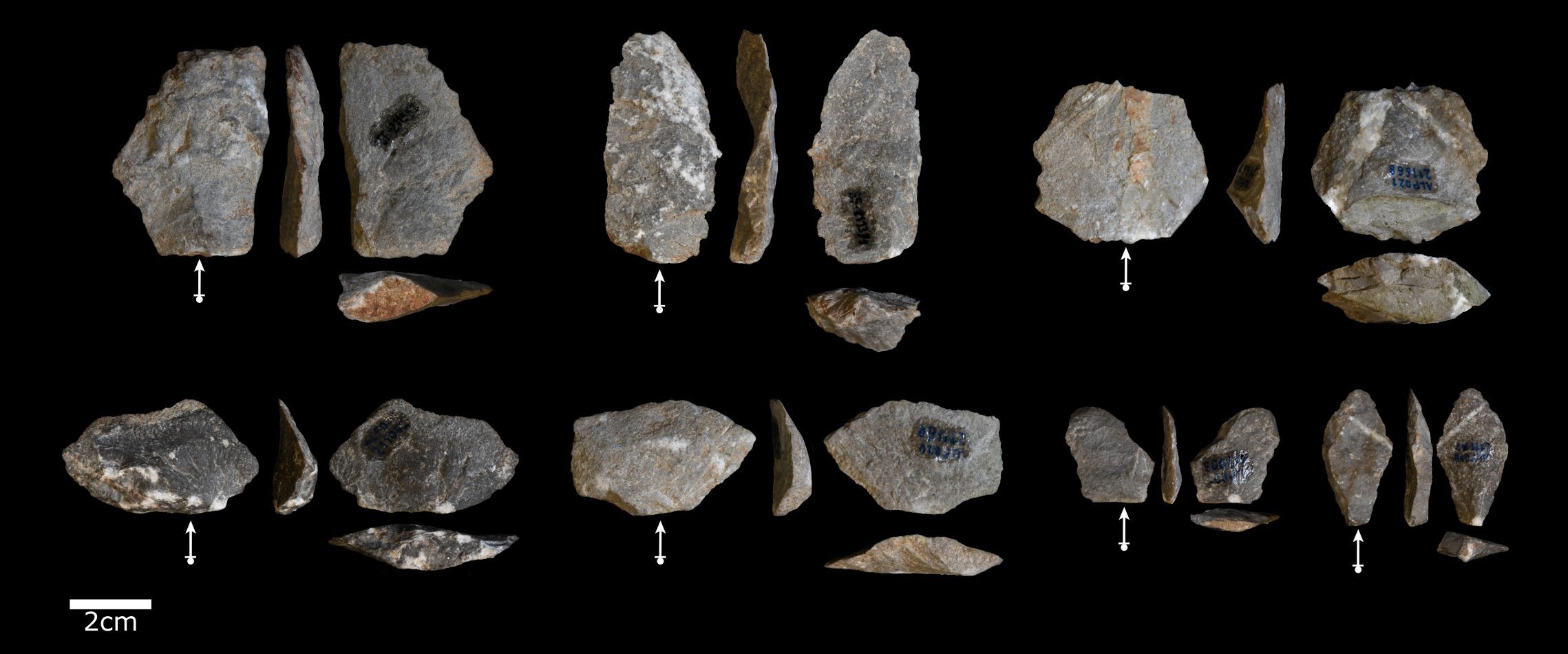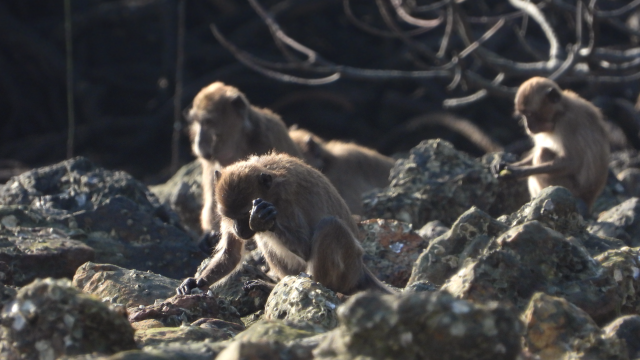Researchers studying macaques in one of Thailand’s national parks made a surprising discovery: While cracking nuts, the monkeys make stone flakes that look an awful lot like the flakes that scientists have attributed to ancient human. The finding means that some of the material held up as the earliest evidence of hominin tool use may have actually come from monkeys and not our ancestors.
The long-tailed macaques (Macaca fascicularis) rely on limestone tools to crack oil palm nuts; they use hammerstones and anvils, very much like those used by humankind. As they crack hard nuts, bits of the stones break off, resulting in an assemblage of stone flakes.
“The ability to intentionally make sharp stone flakes is seen as a crucial point in the evolution of hominins, and understanding how and when this occurred is a huge question that is typically investigated through the study of past artefacts and fossils,” said Tomos Proffitt, a researcher at the Max Planck Institute for Evolutionary Anthropology and the study’s lead author, in an institute release. “Our study shows that stone tool production is not unique to humans and our ancestors.”
The macaques make their stone flakes unintentionally, the researchers note, while human stone flake production has generally been attributed to intentional production of stone tools. It creates a surprisingly convenient parallel to the infinite monkey theorem, which holds that if a monkey is typing randomly on a keyboard it’ll eventually bang out Shakespeare. In this case, the monkeys are accidentally recreating a pivotal moment in human evolution. The new research is published in Science Advances.
Stone tool use has also been observed in chimpanzees and capuchins, and orangutans have gotten suspiciously close to creating stone tools of their own, but the flakes produced in those primates’ processes aren’t as comparable to the ancient stone flakes produced by early humans, the researchers explained.
“The fact that these macaques use stone tools to process nuts is not surprising, as they also use tools to gain access to various shellfish as well,” Proffitt said. “What is interesting is that, in doing so they accidentally produce a substantial archaeological record of their own that is partly indistinguishable from some hominin artefacts.”

The oldest flakes attributed to human ancestors date to about 3.3 million years ago and come from the Lomekwi site in Kenya. The Lomekwi tools are something of a one-off, but the next oldest toolkit — the Oldowan — dates to nearly 3 million years ago and has been found across east Africa. The toolkits predate the genus Homo; last month, researchers announced the discovery of a Paranthropus site with the stone tools.
Whether Paranthropus was the wielder of the tools or on the receiving end of their use, the point is that the Oldowan tools are associated with a diversity of hominin species and were so popular that they spread as far as China.
Proffitt’s team posits that knapped stone may be harder to tell from accidental rock fractures than previously believed. But the similarities don’t make the hominin- and monkey-produced flakes indistinguishable.
Based on their analysis of 1,119 flakes from 40 sites in Thailand, the researchers believe you could replace 20% to 30% of an Oldowan tool assemblage with the monkeys’ flakes before the differences between the stones became statistically evident.
Nonetheless, the similarities are enough that the team believes some flakes currently attributed to humans intentionally making tools may be an unintentional byproduct of monkeys or other primates.
Because intentional toolmaking is such a pivotal moment in human evolution, it’s important we are able to identify evidence of that moment. The team advises a “fundamental reassessment of how we define and identify this uniquely hominin behaviour.”
Related: These Orangutans Got Suspiciously Close to Inventing Stone Tools
